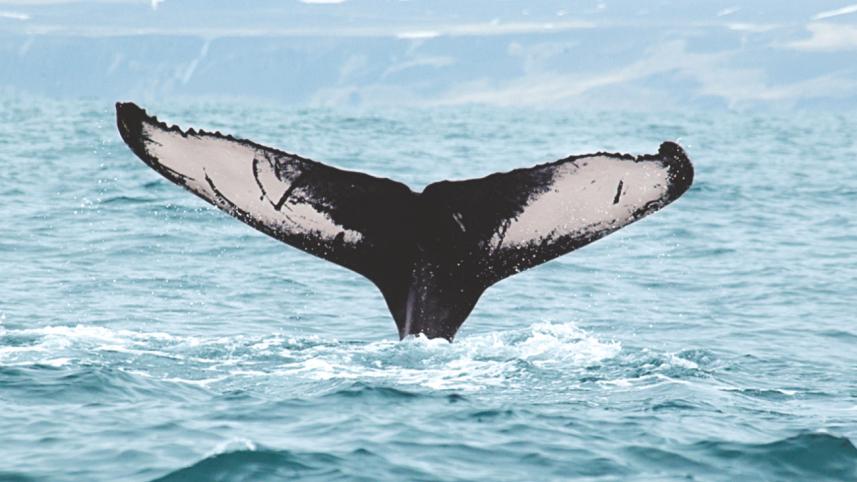The World of Whales

Whales capture our imagination like no other creature. Their size is one reason why: for example, the blue whale, at thirty metres and 180 tons, is the largest creature that ever lived on this planet. Whales are warm-blooded mammals and must breathe air to survive. A thick layer of fat under their skin, called blubber, protects them from the cold of ocean depths.
Two centuries ago, hunting whales was big business. Consumer items such as soap, margarine, candles and lamp oil were made from blubber and other whale matter. With the advent of electricity, modern technology and cheap petroleum, whale-based products declined. Helped by a moratorium on hunting, the global whale population, which had dropped dramatically due to intense hunting in eighteenth and nineteenth centuries, saw a recovery in the twentieth century.
Today, a whale is a magnificent being to be seen and admired, not hunted.
Iceland, an island nation in the North Atlantic (population: 300,000, area: 40,000 square miles), is an excellent place for watching whales. Of the thirty-six species of whales in the world, twenty-three can be seen in the coastal waters of this island, eleven of them frequently. Most of these whales are migratory. During winter, they travel to the southern hemisphere and give birth; during summer they head north to feed at the fish-rich northern waters, including the waters around Iceland.
Recently, while visiting Iceland, I went to the north-eastern port of Husavik, the whale-watching capital of Iceland. Boats with whale-watchers leave Husavik harbour everyday in search of whales.
There are two types of boats for the whale-watching trip. The slower option, on a large and stable sailboat, takes over four hours. Most of this time is spent reaching the whale hotspots and returning from there. Another option is a zodiac boat. It speeds across the ocean to reach the hotspots much faster.
When I opted for the fast boat, I had no idea what a bumpy ride it would be. The boat cut across the rough waves, rising five to ten feet with each wave and then dropping instantaneously. Although it was a grey and cold day there was, mercifully, no rain.
Our boat slowed when we arrived at the first whale area. We saw tantalizing parts of a smaller minke whale and waited in vain for it to surface for breathing. After several minutes we moved to a different spot. We waited another fifteen minutes without any luck. Then we saw two stationary sailboats in the distance, full of tourists and sped to join them.
As we came close, a giant spout – a vertical column of warm air that the whale expels while breathing – rose from the water. Soon the whale was swimming across the ocean. As it dived, it splashed the flukes of its tails. The tail was black outside with a white pattern inside. This pattern is like a fingerprint – each humpback whale has a unique one.
We stayed in the area and saw a second whale (with a different tail pattern.) It swam close by and seemed to enjoy showing off for the tourists. Then, with a flick of the tail, it was gone. A third whale also appeared and disappeared. We waited for more - but one of the most memorable events of my life was over.
www.facebook.com/tangents.ikabir



 For all latest news, follow The Daily Star's Google News channel.
For all latest news, follow The Daily Star's Google News channel.
Comments